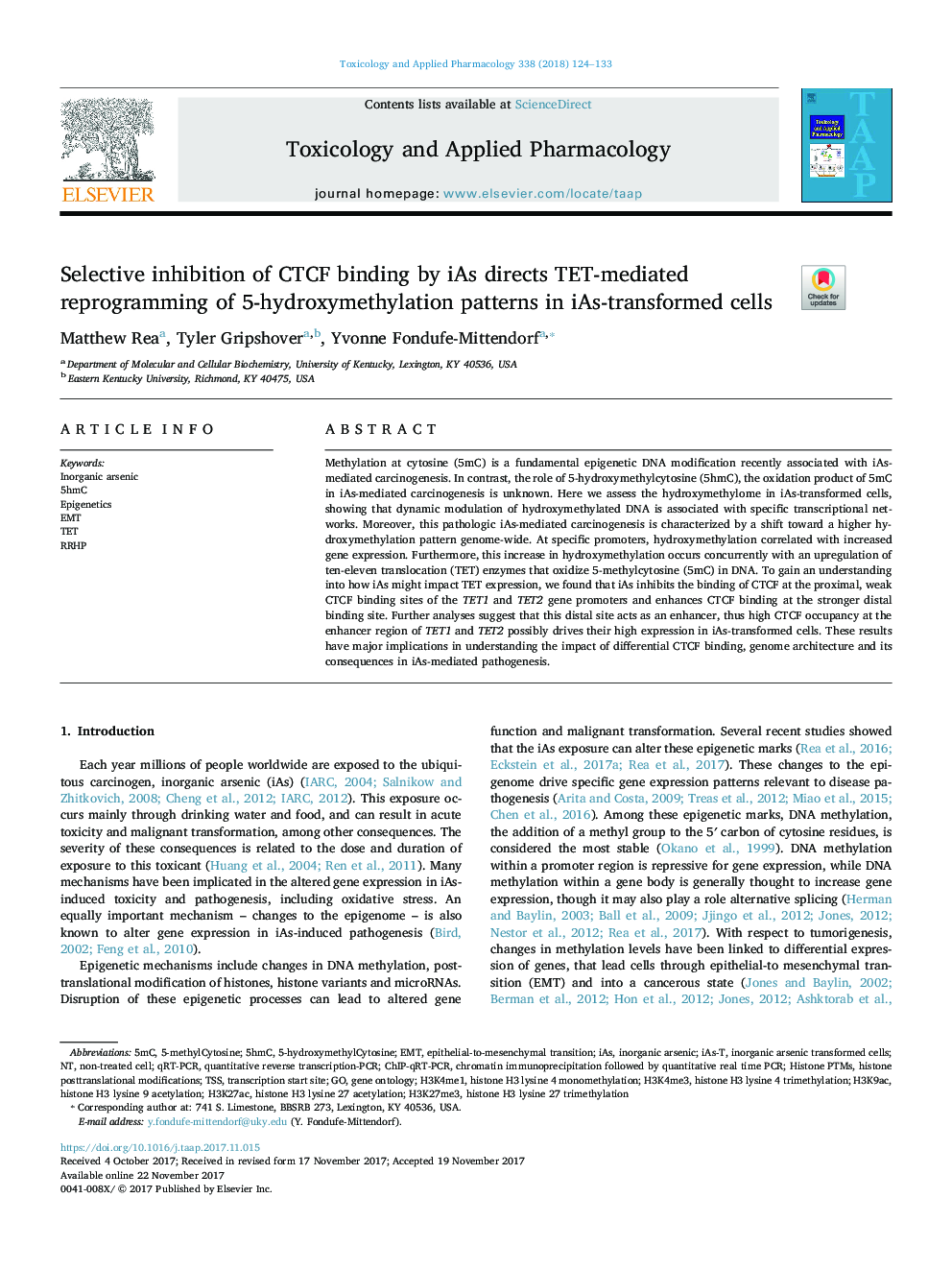| Article ID | Journal | Published Year | Pages | File Type |
|---|---|---|---|---|
| 8539006 | Toxicology and Applied Pharmacology | 2018 | 10 Pages |
Abstract
Methylation at cytosine (5mC) is a fundamental epigenetic DNA modification recently associated with iAs-mediated carcinogenesis. In contrast, the role of 5-hydroxymethylcytosine (5hmC), the oxidation product of 5mC in iAs-mediated carcinogenesis is unknown. Here we assess the hydroxymethylome in iAs-transformed cells, showing that dynamic modulation of hydroxymethylated DNA is associated with specific transcriptional networks. Moreover, this pathologic iAs-mediated carcinogenesis is characterized by a shift toward a higher hydroxymethylation pattern genome-wide. At specific promoters, hydroxymethylation correlated with increased gene expression. Furthermore, this increase in hydroxymethylation occurs concurrently with an upregulation of ten-eleven translocation (TET) enzymes that oxidize 5-methylcytosine (5mC) in DNA. To gain an understanding into how iAs might impact TET expression, we found that iAs inhibits the binding of CTCF at the proximal, weak CTCF binding sites of the TET1 and TET2 gene promoters and enhances CTCF binding at the stronger distal binding site. Further analyses suggest that this distal site acts as an enhancer, thus high CTCF occupancy at the enhancer region of TET1 and TET2 possibly drives their high expression in iAs-transformed cells. These results have major implications in understanding the impact of differential CTCF binding, genome architecture and its consequences in iAs-mediated pathogenesis.
Keywords
histone H3 lysine 9 acetylationhistone H3 lysine 27 acetylationHistone posttranslational modificationsH3K9acHistone H3 lysine 27 trimethylationH3K4me1H3K27acH3K4me3H3K27me35hmCiAsTETqRT-PCRTSS5mC5-Methylcytosine5-hydroxymethylcytosineInorganic arsenicEpigeneticsEMTtranscription start sitequantitative reverse transcription-PCRGene ontologyhistone H3 lysine 4 trimethylationepithelial-to-mesenchymal transition
Related Topics
Life Sciences
Environmental Science
Health, Toxicology and Mutagenesis
Authors
Matthew Rea, Tyler Gripshover, Yvonne Fondufe-Mittendorf,
